Start Licensing’s Ian Downes clocks up the steps in pursuit of licensing highlights at Spring Fair this week.
18,000. 15,000. 13,500.
Not one for Codebreakers – this was my step count for the three days I was at Spring Fair in Birmingham this week. Rather grandly a number of these steps were taken on a Red Carpet. Spring Fair wasn’t upgraded to a VIP event, rather the red carpet was put in place to help visitors navigating the newly laid out show. It certainly helped navigate what is still a vast show with lots of exhibitors. Some halls and product categories had been rejigged or merged. I think luggage was co-located with jewellery for example: I look forward to seeing Pimp My Luggage on Channel 5 sometime soon.
The show may not be as big as it once was, but it still seems a highly relevant one to me and from a licensing point of view a good show to do business at. I think the consensus was that there was less licensing on show in Birmingham which in practice is difficult to gauge accurately and may also be a reflection on the changing face of licensing. In my view, and based on my direct work with the likes of Aardman, Julie Dodsworth and the Ashmolean Museum, there was a lot of activity. It was probably my busiest show in terms of products on show for a while. Certainly enough to get my step count up, although at 18,000 on Monday I may have peaked too soon.
In terms of Looking Out there were a few things I would highlight.
My first observation was how it is good to see some new to licensing companies thriving and seeming to have success through licensing. It is easy to overlook the fact that licensing can accelerate the growth of companies and open a lot of distribution doors for them.
A very good example of this is the company Jardinopia. We work with it on Wallace & Gromit and Shaun the Sheep. I think this was the first licence it signed. This was to supplement a range of its own designs of Potty Feet – 3D designs created to use in the garden to rest pots on.
It has expanded its licensing range to include Peter Rabbit and Flower Fairies. These new products looked great from a design point of view and sit well with the Aardman range. Jardinopia seems to be going from strength to strength. Licensing has widened its distribution and created international conversations for it.
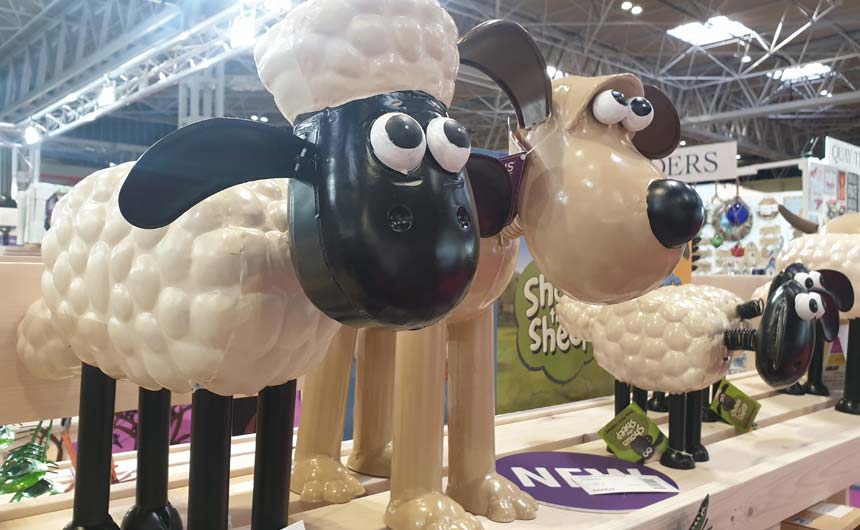
It is a similar story for Primus which produces metal garden sculptures. Starting its licensing journey with Shaun the Sheep and Timmy from Timmy Time, Primus has now added Gromit to the offer. This initial range has done really well and being sold globally.
This has spurred it onto looking at other licensing opportunities and investigating other categories. This has lead it onto a licence with the RSPB. It has created a marvellous range of metal bird sculptures in association with the charity. It seems to have been well received. One benefit of licensing in categories like this is that it helps manufacturers ringfence themselves from copying and copyists.
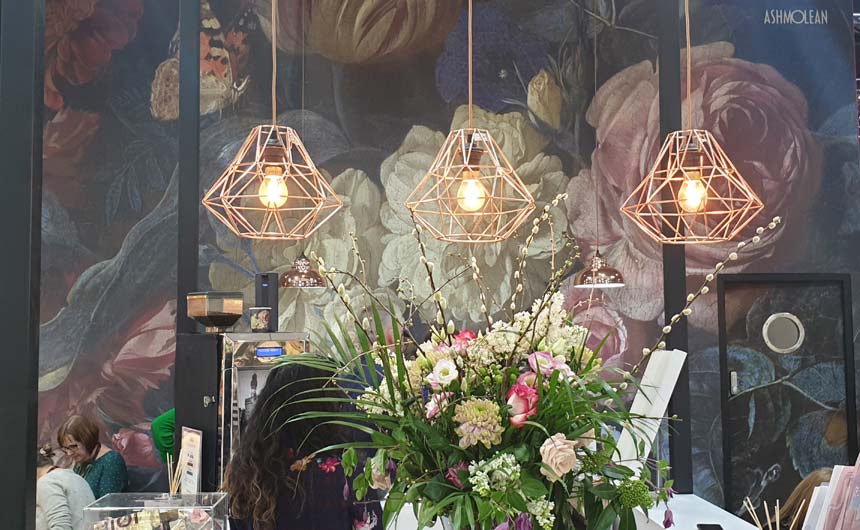
Charities and heritage organisations such as museums are getting more involved in licensing, recognising the value licensing can bring but also its ability to connect them with hard to reach audiences. In turn licensees are more open to using licences from these sectors.
A very visible manifestation of this trend was to be found on card company Woodmansterne’s stand. It used artwork from the Ashmolean Museum as the backdrop to the stand and also featured it on the lanyards, drinks cups and other graphics. It really immersed itself in the Ashmolean’s art. Indeed it was also the front cover image of Progressive Greetings.
Other examples of heritage licensing making an impact included Signare‘s use of the National Gallery and V&A licences on a range of tapestry bags. Really great way to use art from these galleries and deliver a high quality product. In the calendar sector, Carousel Calendars featured brands like RSPB and interestingly had a calendar with artwork featuring ‘felt’ birds. An example of a licensor and licensee trying to grow a brand with a bespoke and custom design approach. Of course, companies like Museum & Galleries, Fox & Chave and Flametree Publishing have always used heritage licenses well and continue to do so. Charities and heritage should see more growth in licensing terms, but like all forms of licensing they need to keep focused on good partnerships, proactively supporting them and giving licensees clear water to operate in.
Connected to this, I thought To Home From London‘s range of London Underground souvenirs including bags made from recycled plastic bottles stood out. It also offers a low MOQ option to print hyper local bags and products based on local stations. This opens up good quality and contemporary products to smaller retailers and from London Underground’s point of view it has created a fresh range of souvenir products that should do well in the London tourist market and open up new accounts.
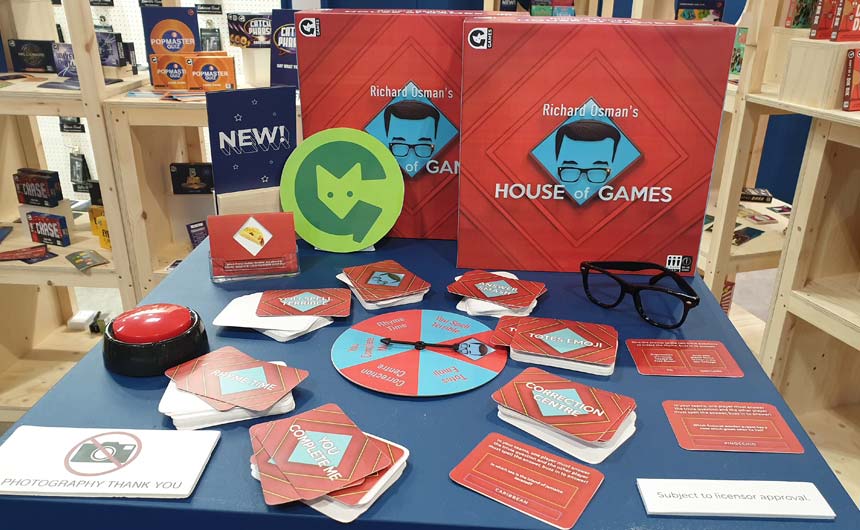
I noticed at the Toy Fair how there is a great connection between TV game shows and board games. It is an obvious link, but one that perhaps hasn’t been developed as deeply as it might have been before.
With this in mind it was interesting to see Lagoon‘s range based on iconic TV quiz show A Question of Sport. It has developed a broad but focused range that uses this TV perennial really well. The bonus with a licence like this is that it also comes with content. Ready made Questions and Answers helps a licensee save time and money. I think this range should do well.
Ginger Fox is also a strong player in this category. It was showcasing a new board game which seemed to have quite a buzz around it: Richard Osman’s House of Games. Ginger Fox has done well with the official Taskmaster board game and the House of Games looks like it will be another winner. Given the growth in TV channels and online streaming, there is more scope for TV game shows to build up a following and of course board game companies may be able to tap into some classic gameshows. This trend also plays well into the growth in things like board game cafés and gaming nights. TV game shows offer a ready made brand but again the eye has to be on tip top NPD as gameplaying experience will be a real benchmark for success.
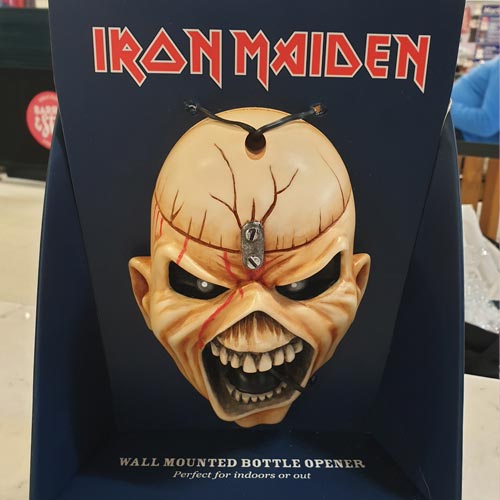
Music continues to be a strong force in gift licensing and returning to the theme of new licensees it was great to catch up with Beer Buddies. It showed me the ‘next generation’ Iron Maiden beer buddy – a wall mounted beer bottle opener. This version is in full colour rather than a metal finish.
It is building on prior success and a great insight into the power of brand bands, but also a reminder to licensees that they shouldn’t stand still. it is important to upgrade, refresh and re-design.
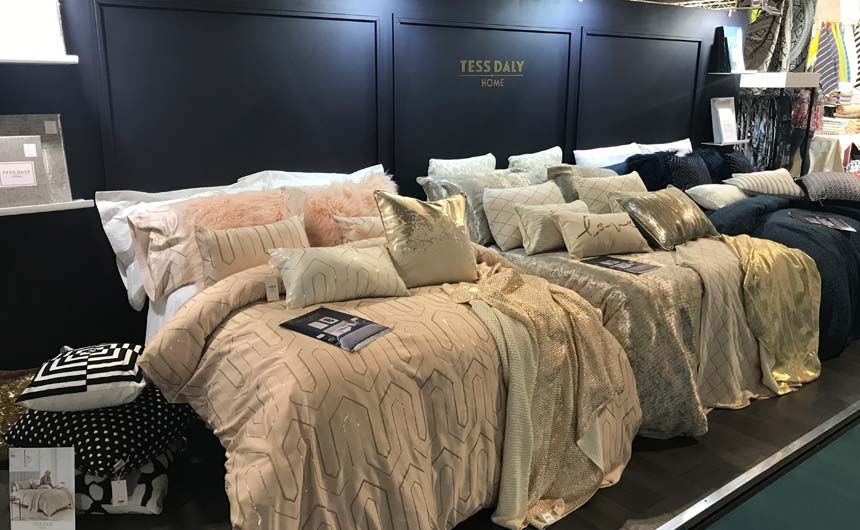
Personality and celebrity brands also featured in the aisles. One example that caught my eye was a range of Tess Daly bedding. Tess is, of course, a high profile TV personality. Not one immediately associated with homewares but a TV star that is readily associated with fashion and style based on TV shows like Strictly Come Dancing and one who is relatively ‘safe’. She is well established and seen as a family friendly ‘personality brand’. Celebrity licensing can be tricky on a number of levels but, again, I think it is a category that has growth potential in the UK especially as direct selling opportunities grow and the fact that consumers are very happy to shop via social media sites such as Instagram.
Some brands seem to power on but this powering on is due to hard work behind the scenes from the rights holders, the broadcaster and of course the licensees. A great example of this is the TV series Friends. This seems like an evergreen licence now and it is difficult to attribute its ongoing success to anyone thing. Of course the TV series still remains popular and is broadcast regularly. The core themes of friendship are obviously timeless but Warner Bros and the licensees have done a great job of keeping product fresh and promoting it well.
Danilo had a great Friends feature on its stand including a replica of one of the apartment doors. This was a much snapped photo opportunity as visitors to the stand immersed themselves in the brand. Likewise events like Friends Fest have helped engage with the Friends fan base. Product is well designed and contemporary. It is a brand that has been well managed by all parties when it could have easily gone the other way in licensing terms. Nurturing a brand is undervalued in licensing terms.
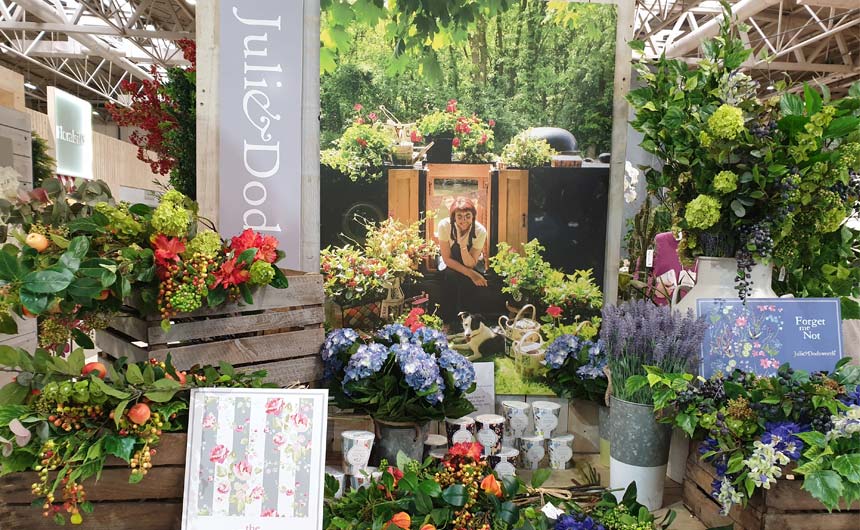
Finally, I would award the Stand of the Show to artisan designer Julie Dodsworth. We represent Julie so I am declaring an interest, but Julie’s stand really brought her brand to life. Her brand is an art-based one featuring floral and botanical designs inspired by her days spent on her narrow boat. The stand was developed to resemble a garden and was liberally decorated with flower displays, lovely props and of course products.
Julie Dodsworth’s business mixes licensing with a wholesale model – a really good example of the modern licensing market and how a hybrid economy can operate. One size does not fit all. But there is also a lesson in using a trade show to trade and show. I think it would be great to see more exhibitors think about their stands and how they can be used to sell their products in a proactive way.
Bravo Julie and Beth – your award is in the post!
Ian Downes runs Start Licensing, an independent brand licensing agency. His Twitter handle is @startlicensing – he would welcome your suggestions for what to look out for.































